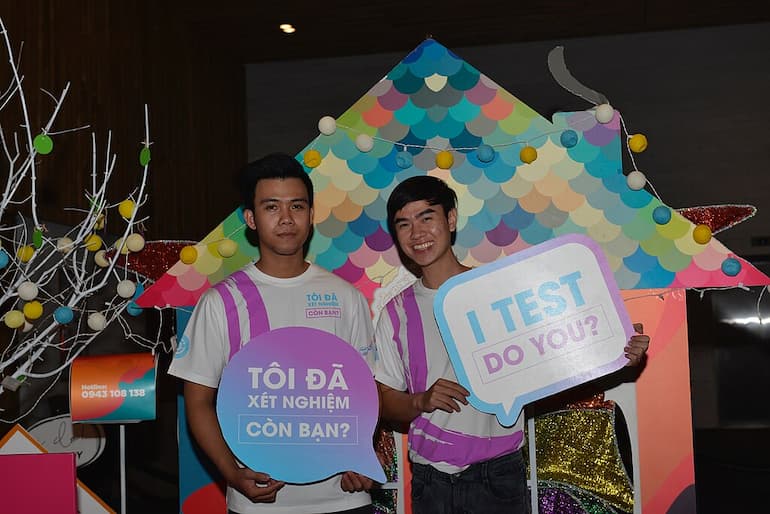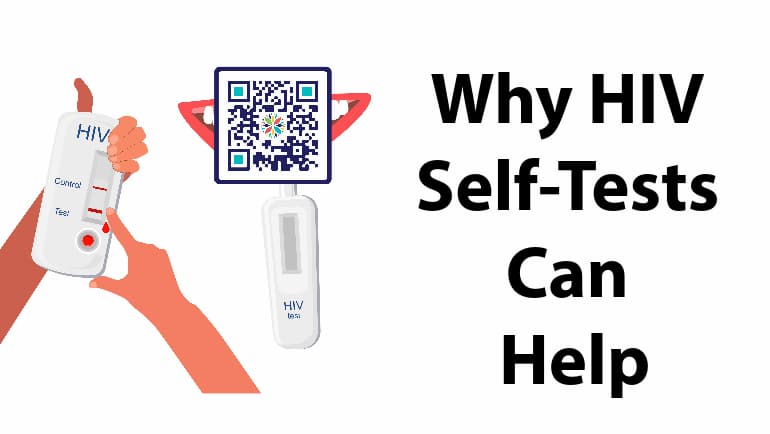A new program for HIV self-testing from The Project of the Cities (TPQC) makes it easier to know your HIV status in at least six ways – starting with the fact that you can now test yourself for HIV in the privacy of your home.
The new self-tests for HIV are considered 99.9 percent accurate, says Joaquin Bueno Diaz, prevention manager for TPQC. They’re taken using a simple mouth swab, and results are available within 20 minutes.
They’re available to anyone in TPQC’s 22-county service area along the Iowa/Illinois border and in the Quad Cities.
You can order these test kits discreetly through an online form that went up in June, at tpqc.org/hiv-self-testing. And if you need emotional support while checking your HIV status, you can order a telehealth appointment with The Project at the same time.
And, it’s all available in both English and Spanish.
HIV self-testing is a worldwide initiative
The ability for people to self-test themselves for HIV, also known as HIV/ST, is an important priority not only for TPQC, but for HIV/AIDS prevention and advocacy groups throughout the world.
Efforts are already underway for years to distribute self-tests for HIV to India, which is the country with the world’s third-highest rate of HIV transmission, writes Path (Promote A Healthier Planet).
“HIV self-testing has the potential to help people overcome barriers such as stigma, a lack of confidentiality, discrimination, and access to testing facilities,” writes Isha Jain. “Additionally, when self-testing patients encourage their partners, family, or friends to do the same, it can have a cascade effect, increasing testing, early detection, and follow-up treatment for more people.”

Self-testing for HIV has been a priority in other countries for years — including Vietnam, which has dealt with a stubbornly high rate of HIV transmission for decades. This photograph is from a 2016 campaign to promote HIV self-testing among people who inject drugs, men who have sex with men, transgender women, and female sex workers. (photo courtesy Wikimedia Commons)
Self-testing has also become a top priority in southern Africa, home to more than half of the world’s HIV-positive people. A project in Zimbabwe that provided HIV self-tests through family planning clinics “increased testing coverage from 0.5% to 64% within 3 months of implementation,” wrote the World Health Organization in June.
While some experts question whether self-testing for HIV leads to better treatment, other factors may affect HIV/ST success in America. For example, while other countries have several different HIV self-tests to choose from, only one HIV self-test is approved by the Food and Drug Administration.
The renewed focus on self-testing comes following a slowdown in HIV/AIDS testing during the COVID pandemic, says the Centers for Disease Control. Overall, testing for HIV dropped 32 percent between the first and second quarters of 2020, and only rebounded to pre-pandemic levels a year later.
Testing and treatment among People of Color continues to lag behind whites, the CDC also says.
Rural communities, People of Color can benefit the most from HIV self-testing
TPQC’s focus on self-testing for HIV is part of the nonprofit’s goal of reaching more people, from more diverse communities, Bueno Diaz says.
People who live in more rural areas along the Iowa/Illinois border, who have limited transportation, may find the self-test kits especially helpful, he says. They can now get on top of their own HIV status without having to travel to The Project’s headquarters in Moline.
In addition, people who speak Spanish now have a way to check their HIV status without having to tackle a language barrier that often exists with English-only practitioners. And People of Color who may not feel comfortable walking into a clinic in their hometown now have another alternative to check their status.
“We’re also trying to reduce the stigma or fear of having to come into our clinic, or any other clinic, and be seen by other people,” he said. “Or, by going into a clinic that is (perceived to be) predominantly for the LGBTQ+ community.”
Other groups nationwide are also trying to reach underserved communities through self-testing kits. The Human Rights Campaign this summer announced a collaboration with CVS to distribute 3,000 self-test kits for HIV nationwide.
Testing for HIV is key to obtaining life-saving medication
HIV rates have dropped considerably in recent years, with advances in medication and testing. Early detection has enabled more people with HIV to have an “undetectable” viral load — which also means they are no longer at risk for transmitting the infection to another.
New infections in 2021 were 12 percent less overall than in 2017, says a May 2023 CDC report. But that same report says those gains were not experienced the same across different demographics.
New cases of HIV among gay and bisexual men, the demographic hardest hit by HIV, dropped almost half as much among those who identify as Black, than those who identify as white.
Almost 80 percent of white people eligible to take PrEP, the daily pill that can render HIV undetectable, received the medication in 2021. By contrast, only 21 percent of eligible Hispanic people received the medication, and only 11 percent of eligible Black people received PrEP.
“We really want to eliminate barriers, so that people can get tested, know their results, and stay healthy.”
To order a self-test kit, head to tpqc.org/hiv-self-testing, or click on the QR code at the top of this article. For additional questions, reach out to TPQC at 309-762-5433 or tyler@tpqc.org.
(scan cover photo QR code to access The Project of the Quad Cities’ form to order a self-test kit for HIV, or HIV/ST)






